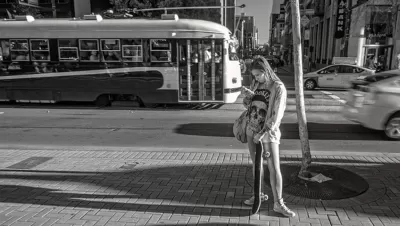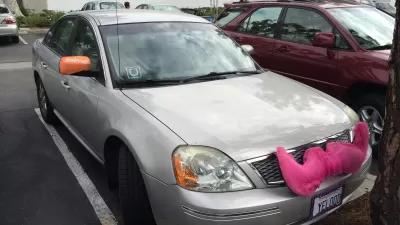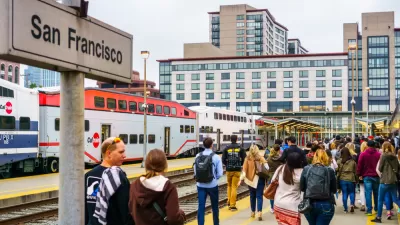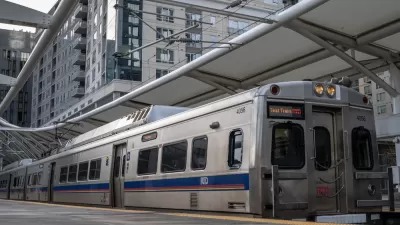Hate it or love it, Uber has changed the transportation game across this country. To boost ridership and change its public image, transit should consider taking some cues from the rideshare giant.

Uber isn't universally beloved by any means, but its Silicon Valley disdain for the way things are done has brought it massive success, especially in cities where it supplements and competes with public transit. This piece gives us three ways transit can learn from Uber. Accompanying GIFs of current and former presidential candidates Clinton, Bush, and Rubio may make all of this more palatable.
Here are the three lessons:
- Transition to app-driven payment. "When you get in an Uber, you don't pay fare like you do on a bus. You just start moving. When you reach your destination, you don't fumble for cash and wait for change like you do in a taxi. You just get out." This creates a "magical feeling" transit would do well to replicate in the iPhone age.
- It's easier for a digital startup to tweak frequencies, but that doesn't make this aspect of customer service any less essential. "With much fanfare, Austin introduced bus services that come every 15 minutes at peak times and every 20 minutes off-peak. For Uber, by contrast, a passenger waiting 15 minutes for service is considered a failure."
- Horror stories aside, Uber places a priority on driver courtesy and quality of service. The author recommends that "transit agencies could incorporate a method for customers who pay by app to rate their rides and use information to grade and improve drivers. This would require a massive–but necessary–change in how agencies relate to their drivers and customers."
FULL STORY: Three Lessons Public Transit Can Learn From Uber

Planetizen Federal Action Tracker
A weekly monitor of how Trump’s orders and actions are impacting planners and planning in America.

Congressman Proposes Bill to Rename DC Metro “Trump Train”
The Make Autorail Great Again Act would withhold federal funding to the system until the Washington Metropolitan Area Transit Authority (WMATA), rebrands as the Washington Metropolitan Authority for Greater Access (WMAGA).

The Simple Legislative Tool Transforming Vacant Downtowns
In California, Michigan and Georgia, an easy win is bringing dollars — and delight — back to city centers.

The States Losing Rural Delivery Rooms at an Alarming Pace
In some states, as few as 9% of rural hospitals still deliver babies. As a result, rising pre-term births, no adequate pre-term care and "harrowing" close calls are a growing reality.

The Small South Asian Republic Going all in on EVs
Thanks to one simple policy change less than five years ago, 65% of new cars in this Himalayan country are now electric.

DC Backpedals on Bike Lane Protection, Swaps Barriers for Paint
Citing aesthetic concerns, the city is removing the concrete barriers and flexposts that once separated Arizona Avenue cyclists from motor vehicles.
Urban Design for Planners 1: Software Tools
This six-course series explores essential urban design concepts using open source software and equips planners with the tools they need to participate fully in the urban design process.
Planning for Universal Design
Learn the tools for implementing Universal Design in planning regulations.
Smith Gee Studio
City of Charlotte
City of Camden Redevelopment Agency
City of Astoria
Transportation Research & Education Center (TREC) at Portland State University
US High Speed Rail Association
City of Camden Redevelopment Agency
Municipality of Princeton (NJ)





























